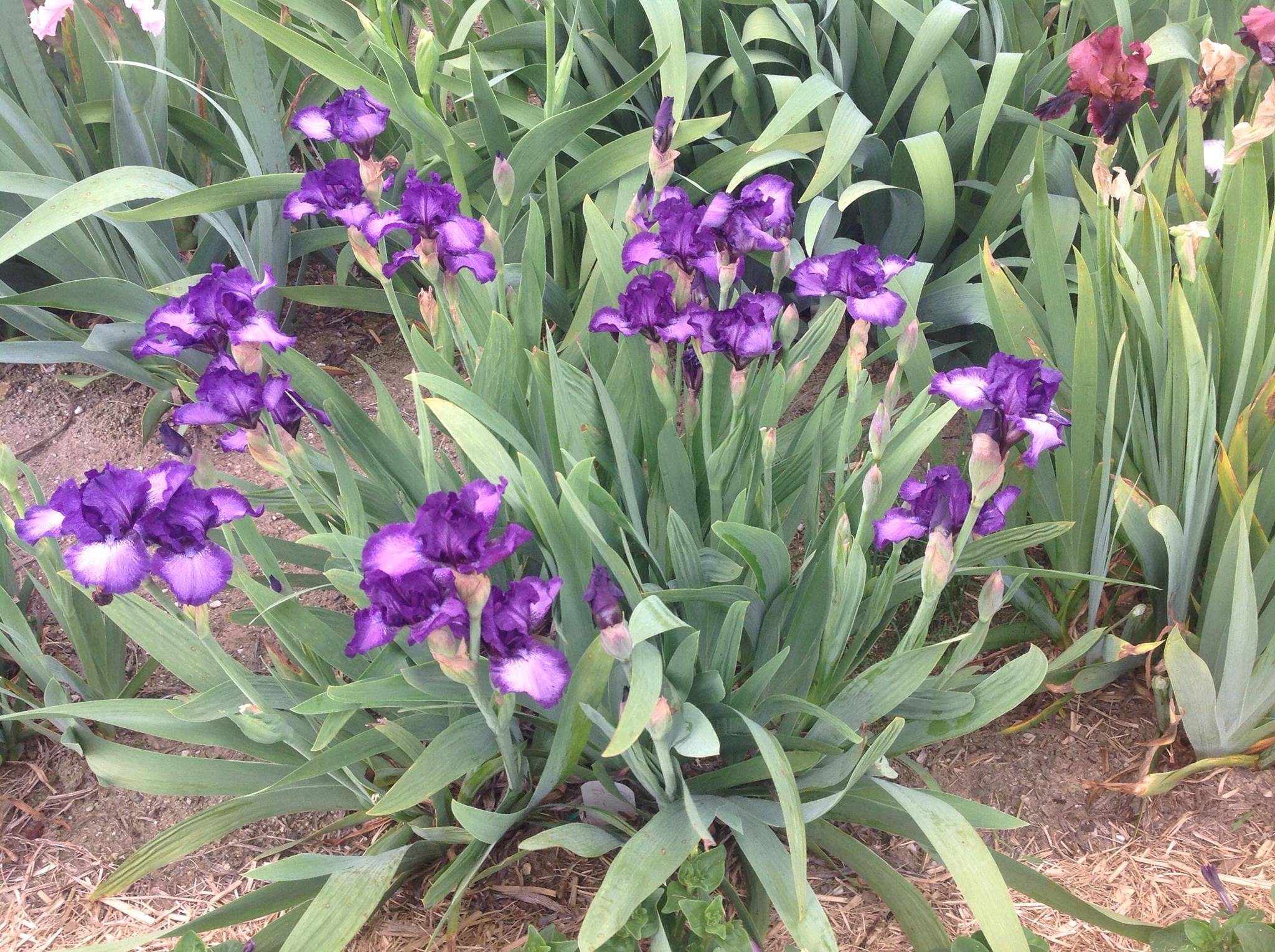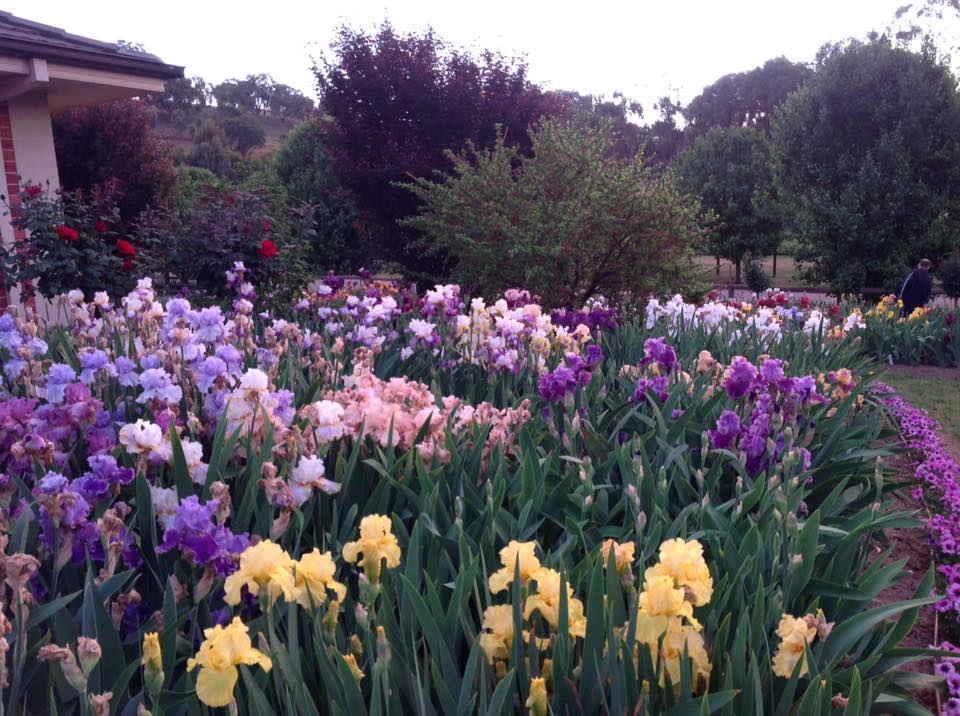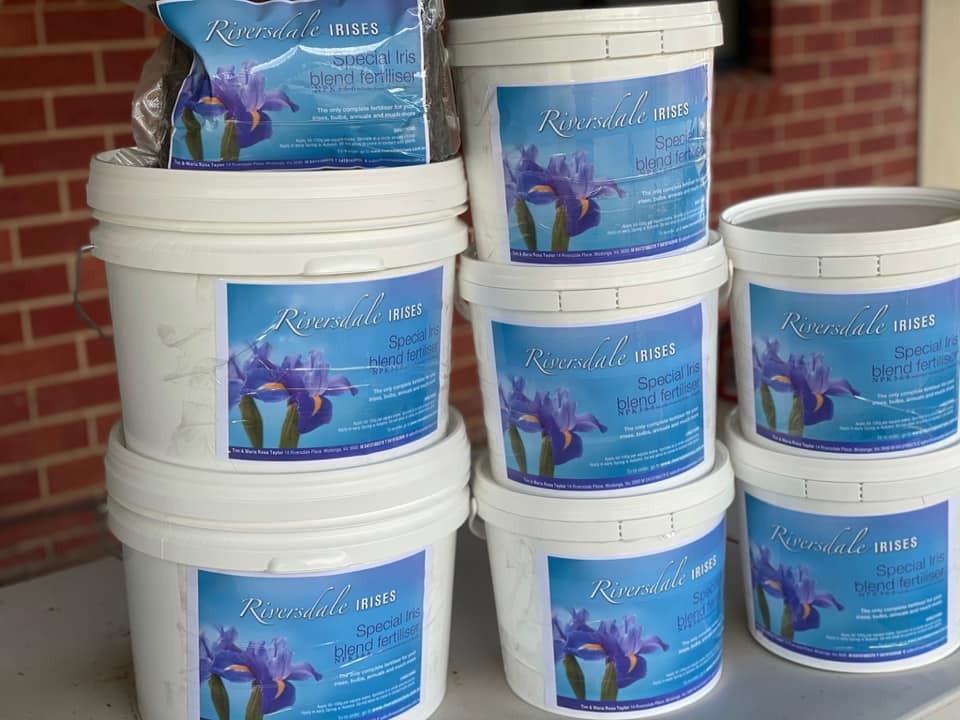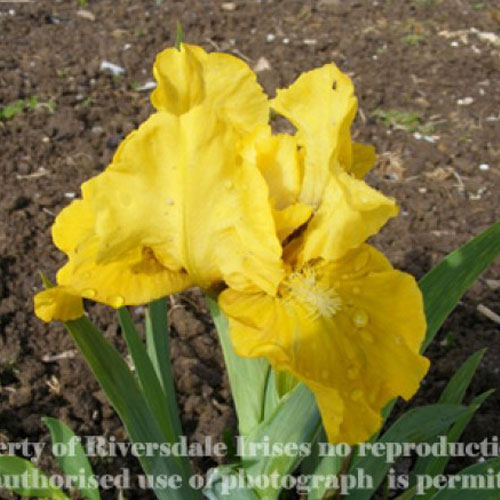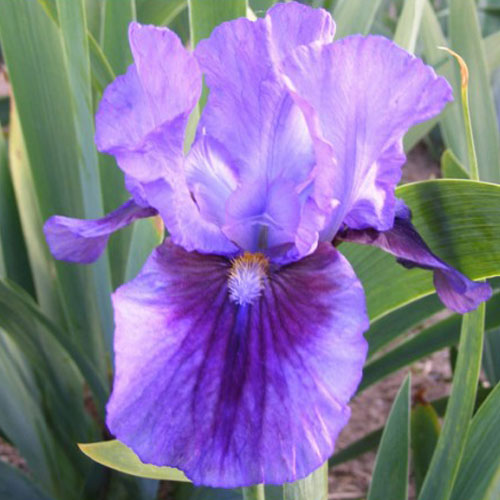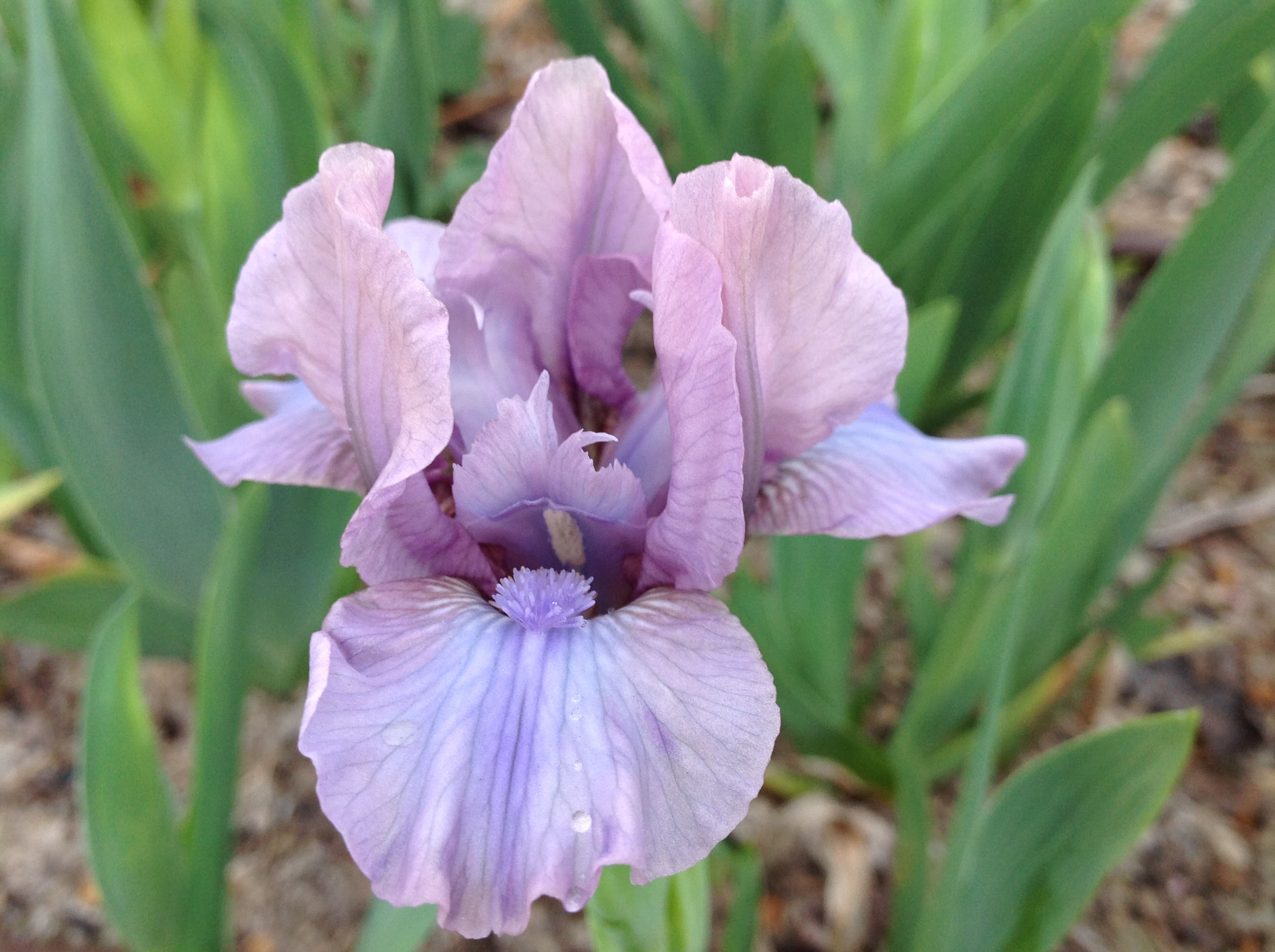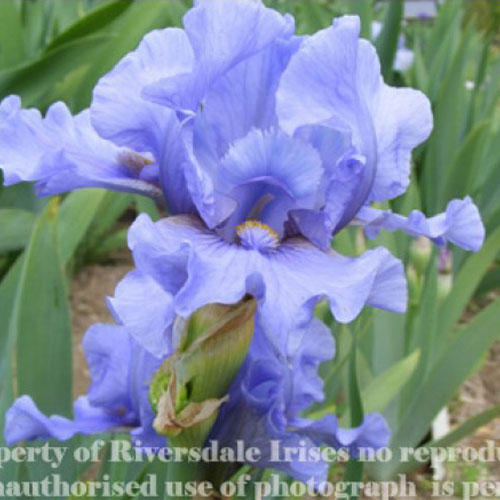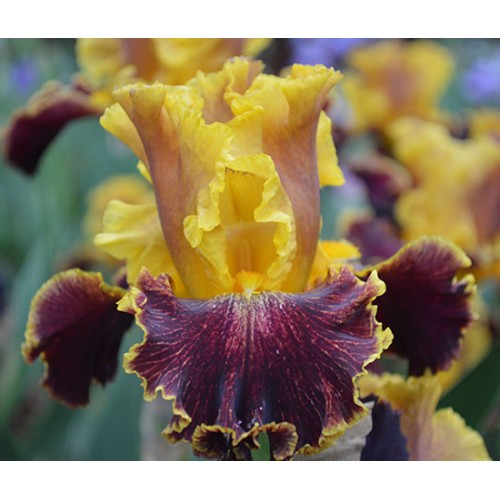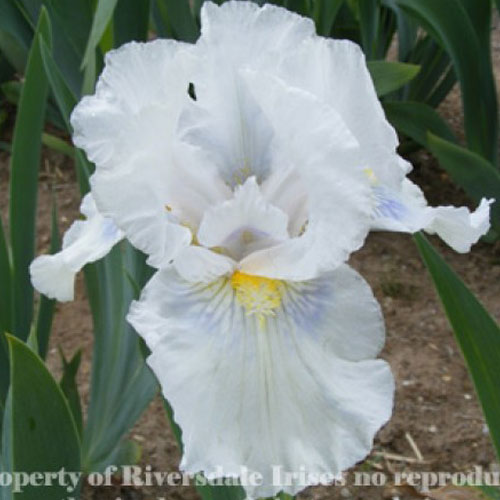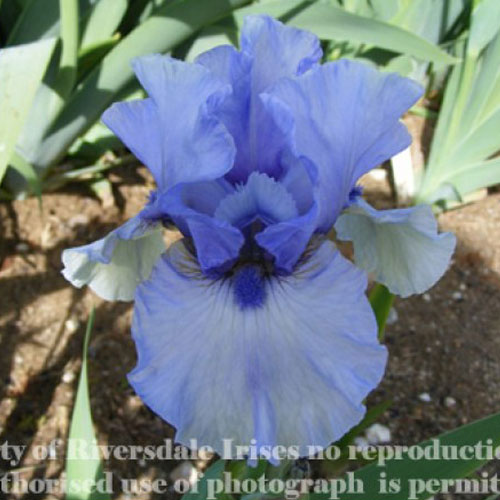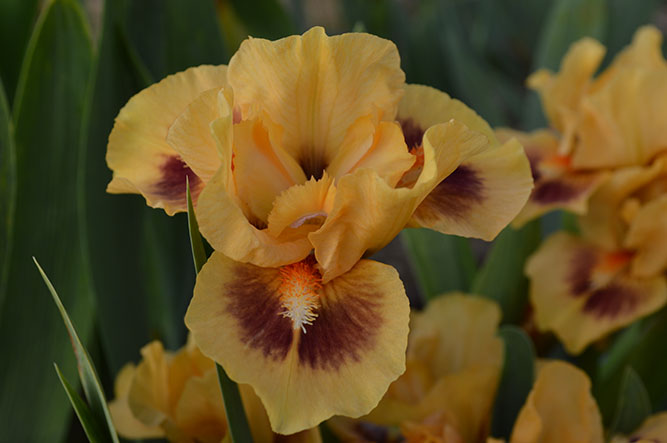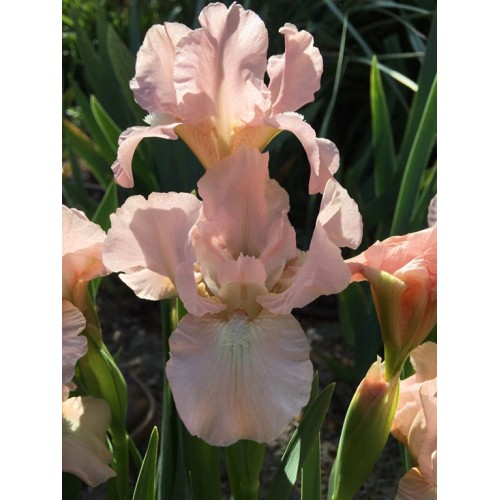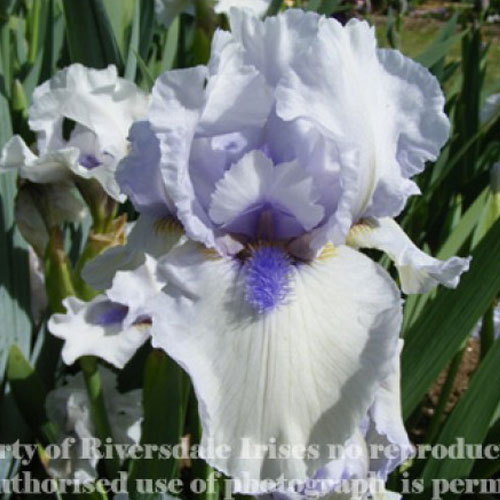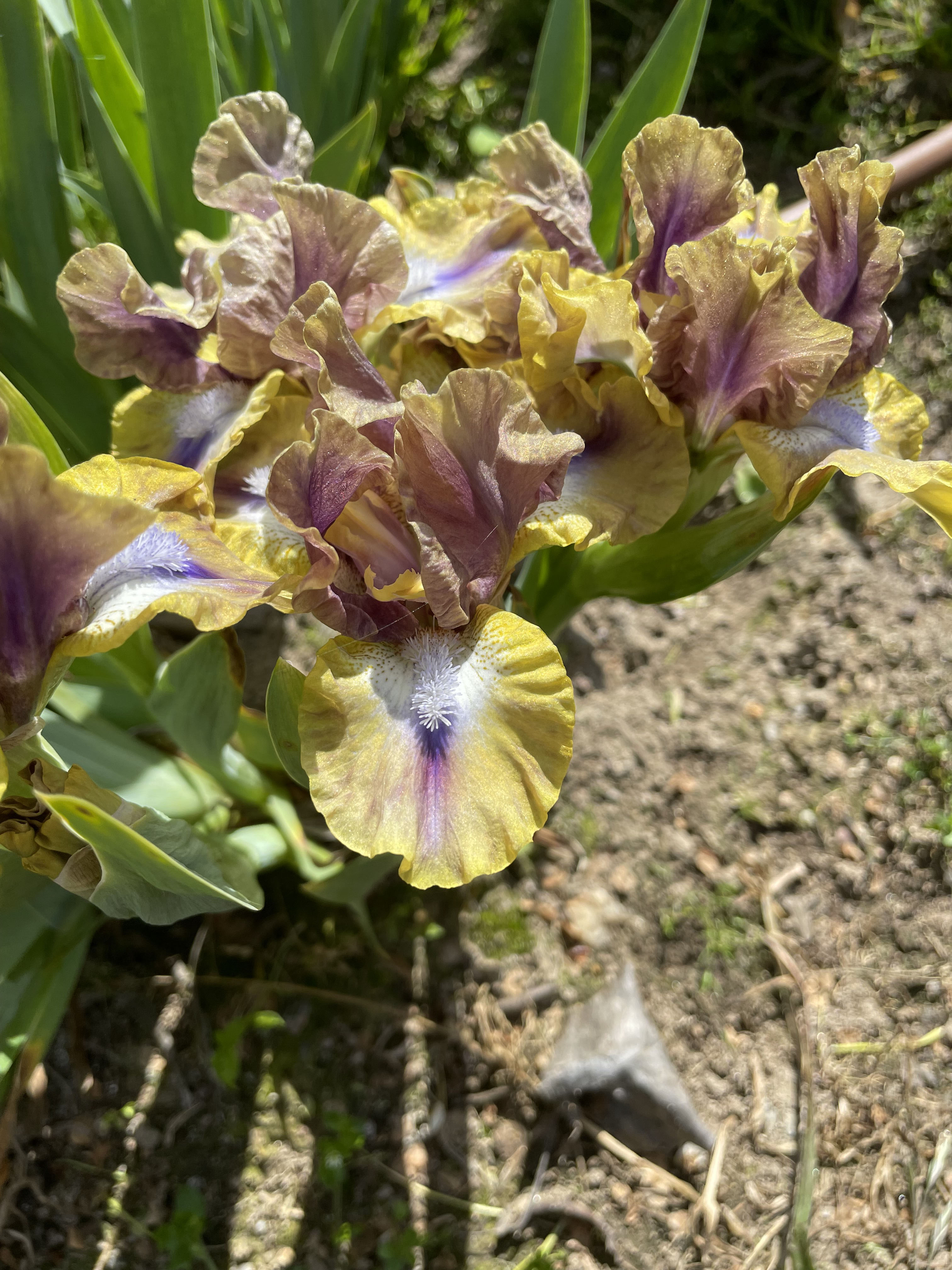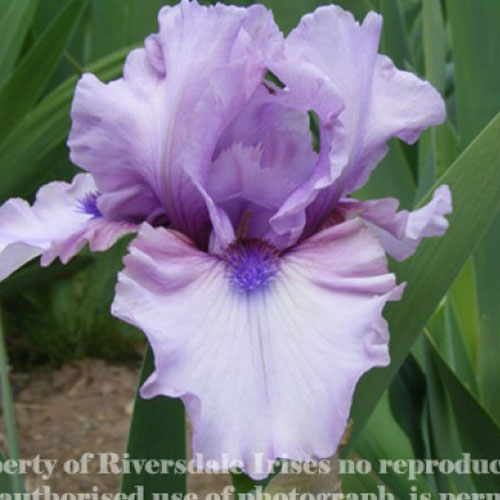Riversdale Irises
On making the move four years from the North West of Victoria to the North East Victoria, we were faced with soil differences. In Wodonga, our soil is a mixture of sand, silt and clay, it drains well but if the clay content is high, the soil has a tendency to compact.
In order to determine what the Iris responds best to, we have tried a couple of different methods. In some beds to overcome the high clay issue we have blended in some sandy loam incorporating it into the soil to help prevent the soil from setting too hard. In other beds we have planted the Iris in beds made up of straight sandy loam, the Iris have responded well to both, appearing to enjoy the free draining properties of the sandy loam and developing good root systems.
As a big believer of using water wisely I have put our entire Iris collection on drip irrigation with great results, this has also reduced the occurrence of rust as the water is applied at the base of the plant. When plants have been lifted and divided we use seaweed and amino grow to stimulate new root growth. Plants are soaked in trays just covering the roots and the rhizomes overnight. I have found that new roots regenerate much quicker especially if the rhizomes have been allowed to dry out a little after being lifted.
Riversdale Special Iris Mix
What fertilizer do we use on Iris? This question is often asked by both experienced and novice growers or gardeners. We know from years of experience that bearded iris have higher need for phosphorus, some potassium and only a small amount of nitrogen. Trace elements will be of some importance, but will vary with local soil conditions and Ph. In the past I relied on superphosphate to supply my Iris with the phosphorus and trace elements which I mixed with potash to make up the other nutrients.
Before the emergence of blooms in Spring I used various complete fertilizers to provide some nitrogen, phosphorus, potassium and trace elements. Generally these products would have an NPK of 5, 6, 6 and include trace elements. Using a product that has high Nitrogen content has resulted in problems with Iris from rot to soft growth, using a product that has a high P&K can result in too much bloom and a reduction of increase in plants.
As you are all aware there is a lot of trial and error and as such I wish to share my success with you all, my fellow Iris growers. After finding it difficult to find all components I required to make up a complete fertilizer, I decided I should try to find something that had a suitable analysis for my plants and in particular my Iris. Many hours of research and I was successful in my quest. I found a fertilizer manufacturer that had was able to custom make a blend that would provide the Iris with the correct levels of nutrients required for ultimate plant growth and development.
The blend settled on has 2.2% Nitrogen, 6.0% Phosphorus, 6.1% Potassium. It also has a selection of 9 trace elements to complement the mix. I have named this Riversdale Special Iris Mix it can be applied in early Spring before bloom or in Autumn. As you have probably realized by now, I like to conduct trials and measure the results and as such have use the Riversdale Special Iris Mix on other plants in our garden which include daylilies, bulbs and annuals with fantastic results. This product is also suitable for use on vegetables or any plants that don’t require very much nitrogen.
Reasons to shop with us
Fast delivery

Secure payment


